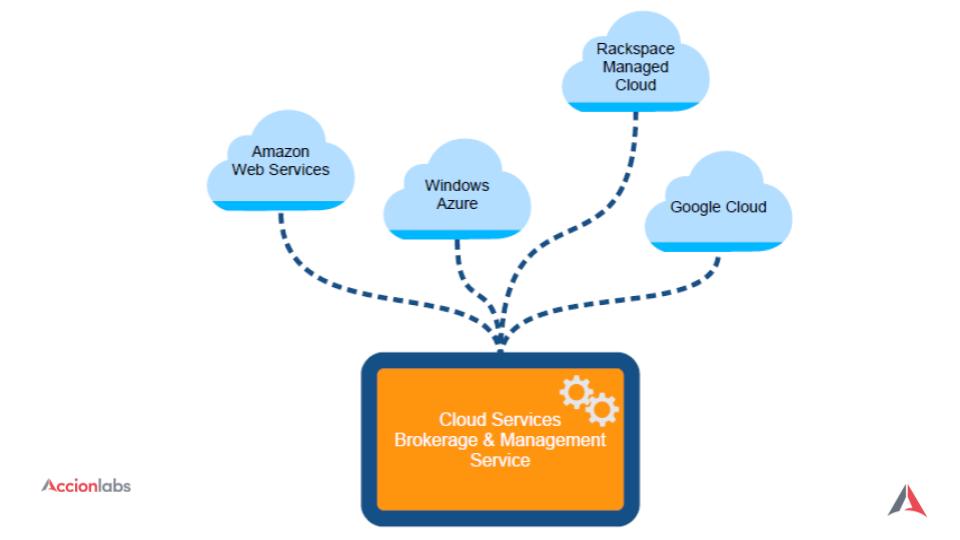How we Helped a Cloud Brokering Company Override Talent Shortage for Product Innovation
Pioneering the model of cloud brokering, a Texas-based technology company was facing talent shortages to build and launch the next version of their popular range of products in cloud computing. The product vision was there, product development roadmap was ready but the dream development team was missing.
Skills in emerging technologies being few and expensive, these resources are in high demand. Even if they join, it if often difficult to retain them. A debate was on to decide about the best way forward - an on-site or an offshore model of product development with extended innovation teams.
The company's cloud brokerage and management software product CloudMatrix was designed to make it easy to compare, procure, consume and manage a broad ecosystem of cloud services and enable users to move from a slow service-ticket model to an agile design-to-order model. Company's software product also offered many deals and offers to make it a cost effective choice for cloud services. It then provided a list of vendors with feature/cost comparisons to make it easy to choose from.
Company had built a super simple application instead of complex systems to provide choice of cloud platforms and got the business going quickly. The unique selling point of the product was that from a single pane you could have manage all of your applications regardless of service provider. It was a unified console/dashboard experience, that integrates information from varied sources across multiple applications and environments, into a single display. This applied to providers across geographies as well. The end-to-end user experience involved an in-depth engagement all along the buying cycle of compare and consume. It also provided a relief from vendor lock-in because customers could seamlessly move from one cloud provider to another in a few clicks.
The next version of the product was in pipeline. It involved a major user interface overhaul where the cloud service providers and their customers share their information and interact in order to get the business up and running in the cloud environment. This was crucial both for a new customer who may have limited knowledge of the cloud architectures and also for the cloud service provider to know, accommodate and manage the needs of their new clients. The growing popularity of the platform and increasing number of cloud service providers meant that larger and diverse data management and user management was a product need. Each cloud vendor had to go through a training every time a new user came onboard. Even creating unique IDs was a hassle. To meet these unique technology and business challenges, the company began a search for a partner with a strong foothold in emerging technologies, excellent product development (PDLC) background and an access to high-quality technical expert resources that could be made available at optimal cost.
The Accion Extended Development Centre (EDC) model was a perfect fit for this requirement. It was the diversity of skill sets in new technologies available under flexible engagement models that made this innovation-driven IT company to say Yes to Accion on the very first engagement call. In-depth discussions were further held to understand more about the product design and the technology environment. Discovery sessions were held to get a much better understanding of the users, their goals, stakeholders goals, technical challenges and technologies required for completing the project. The deadlines were tight.
An extended innovation center was set up for the client with Cloud & SaaS engineers and QS engineers with cloud experience. The team’s expertise in building software was leveraged with two SCRUM teams, one for front-end development and one for back-end web services and integration. The solution provided services to connect with IT services from multiple cloud suppliers- Amazon WS, Google Compute Engine, VMware vCloud, and MS Azure.
The Accion Innovation Centre (AIC) team wanted to ensure they chose the best technology available for the software architecture to take care of database interactions that will be a system requirement once the volume of users increases. AIC team's approach was to deliver a fully customizable architecture based on company's requirements that could also accommodate changes in future. Features like exception management, auditing and logging through a comprehensive framework were designed to make it easier for cloud vendors to use the platform for their business. Alignment to a Test Driven Development (TDD) framework was done that brings in a balanced approach to programming and has the perfect blend of three important activities of coding, testing and designing (refactoring). In the architecture, the team used iBATIS a simple and lightweight persistence framework.
The team worked in collaboration with the company and released their latest version of Cloud Matrix product. Accion successfully delivered the major releases of product including 4 versions. Accion was also involved in getting Proof Of Concept (PoC) done for the company's clients and successfully created the SDK for integrating with different cloud providers.

Technology Stack
HTML5, CSS, JS, AngularJS, Thymeleaf, IceFaces, JSF, Java/J2EE, Spring, EJB, Hibernate, IBatis, MS SQL Server, Amazon AWS, Google Compute Engine, VMware vCloud, MS Azure, Jenkins, Git, Chef, JIRA

Overcome your talent shortages and accelerate your time to market with Accion's application engineering services by contacting us.
